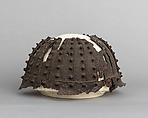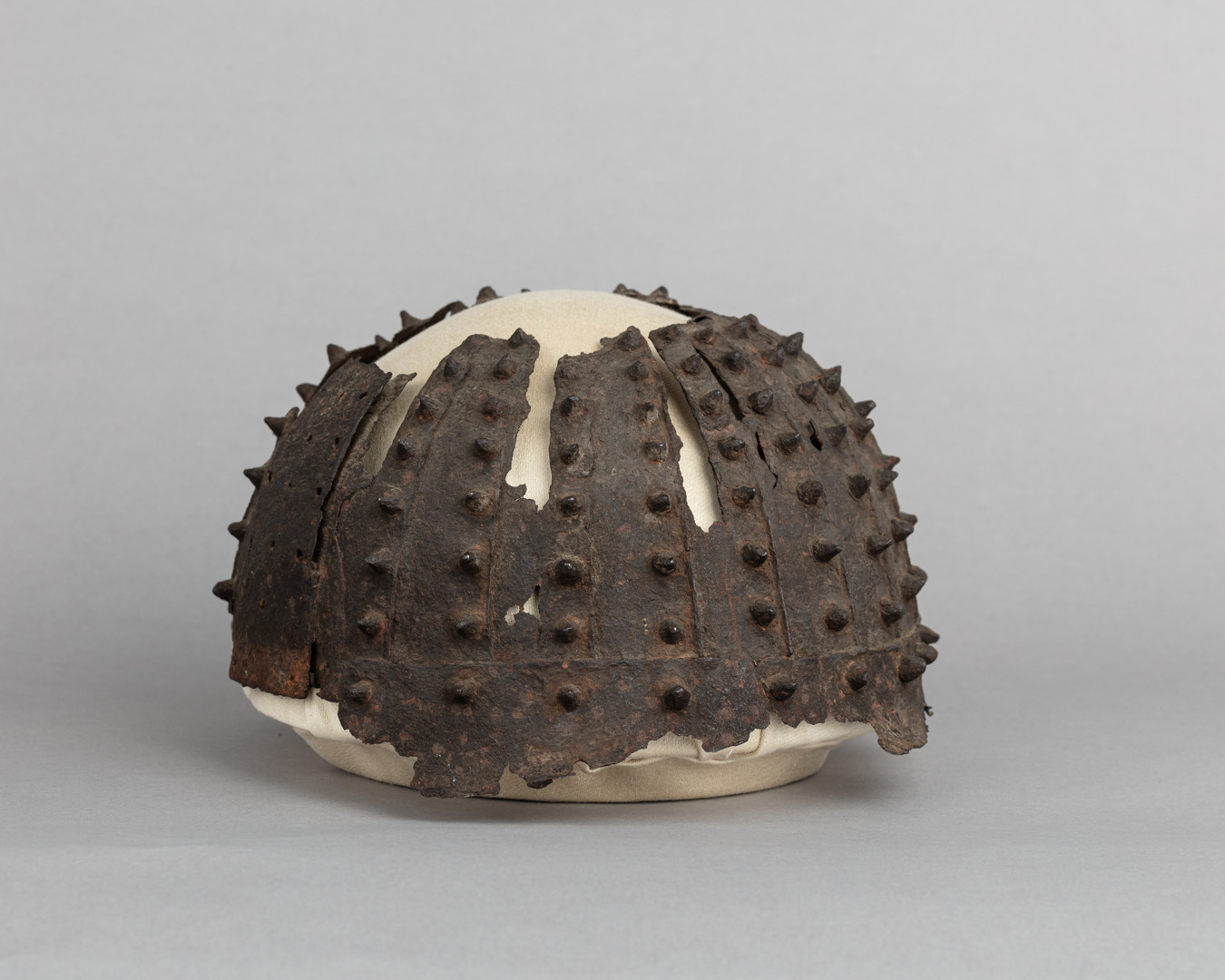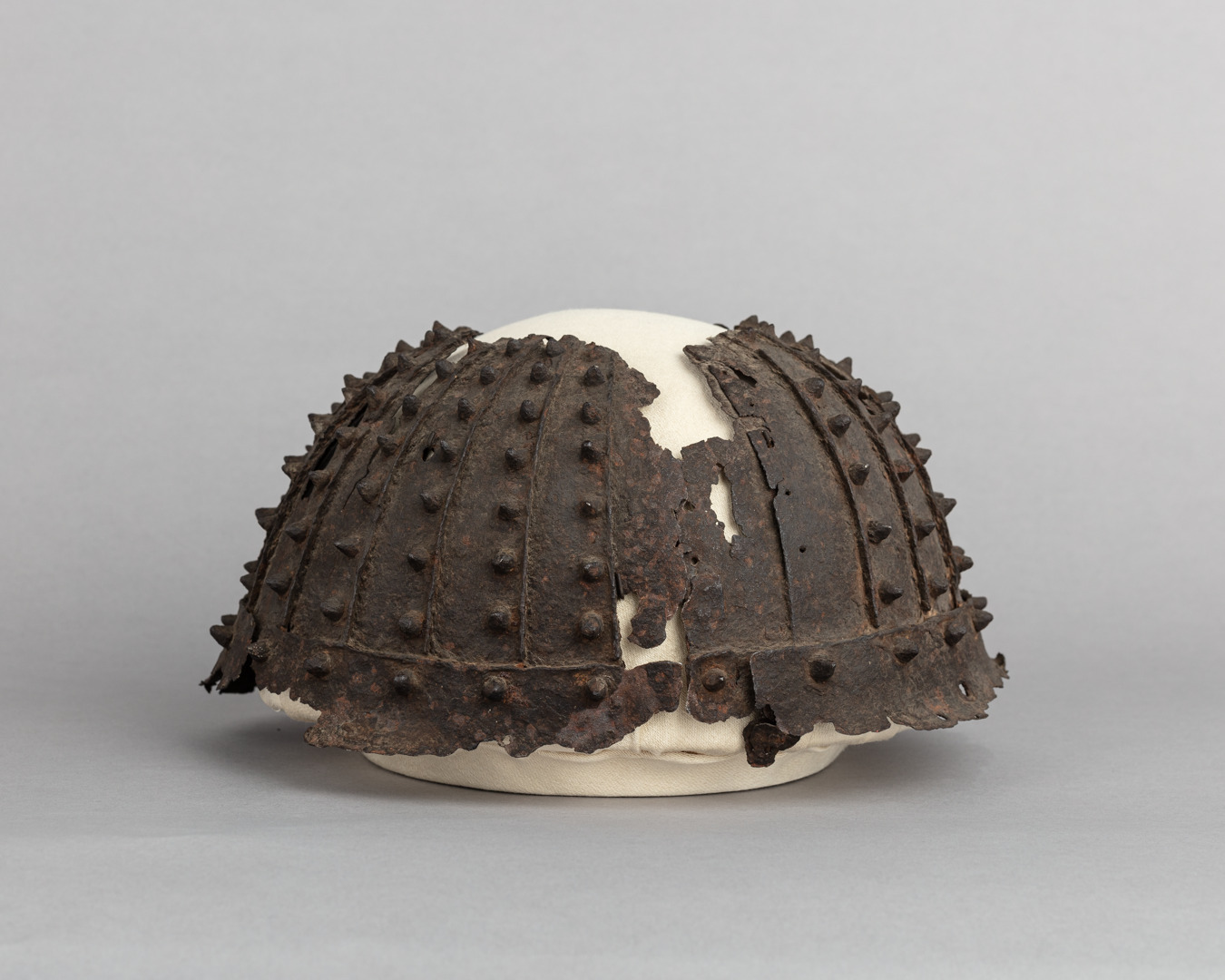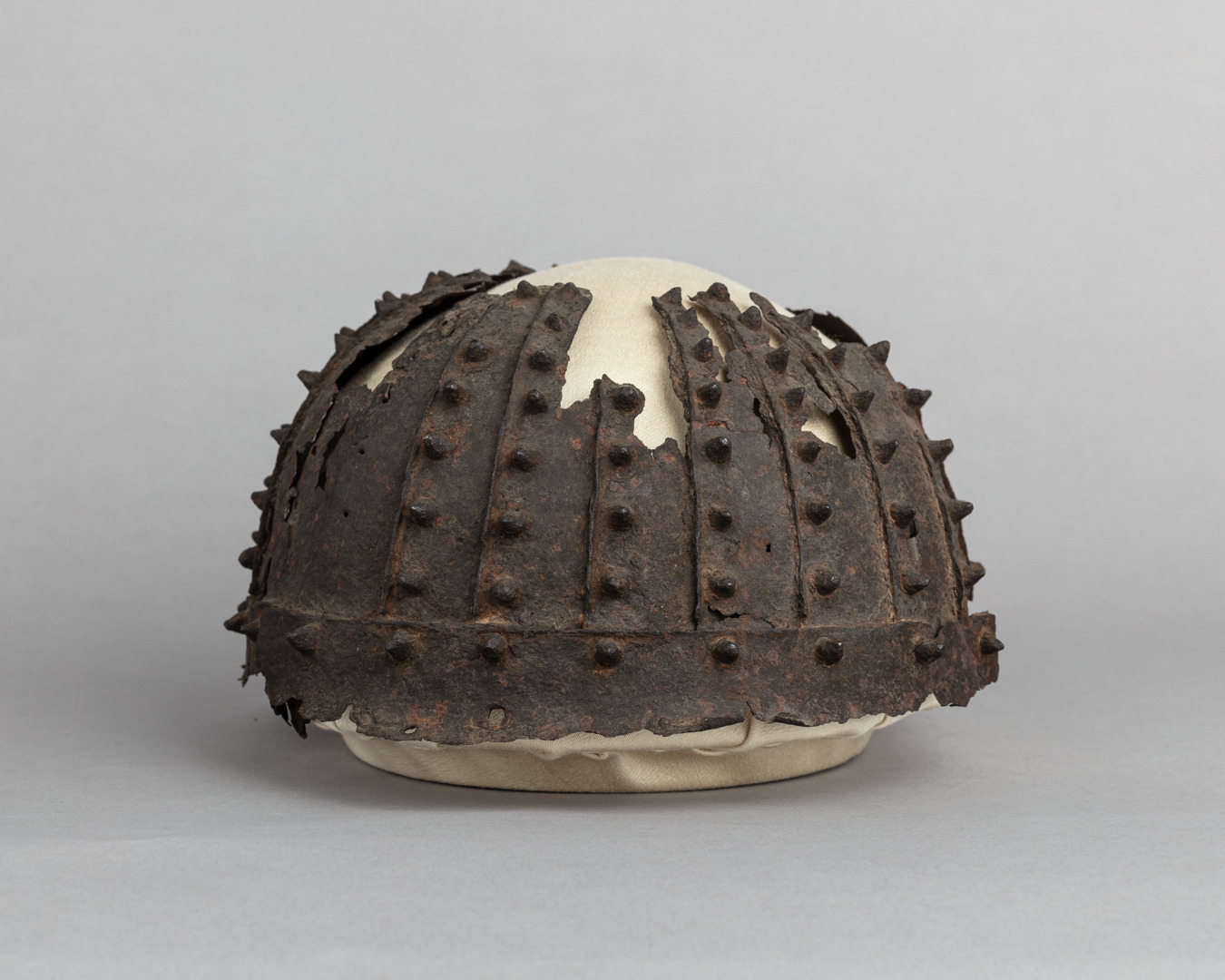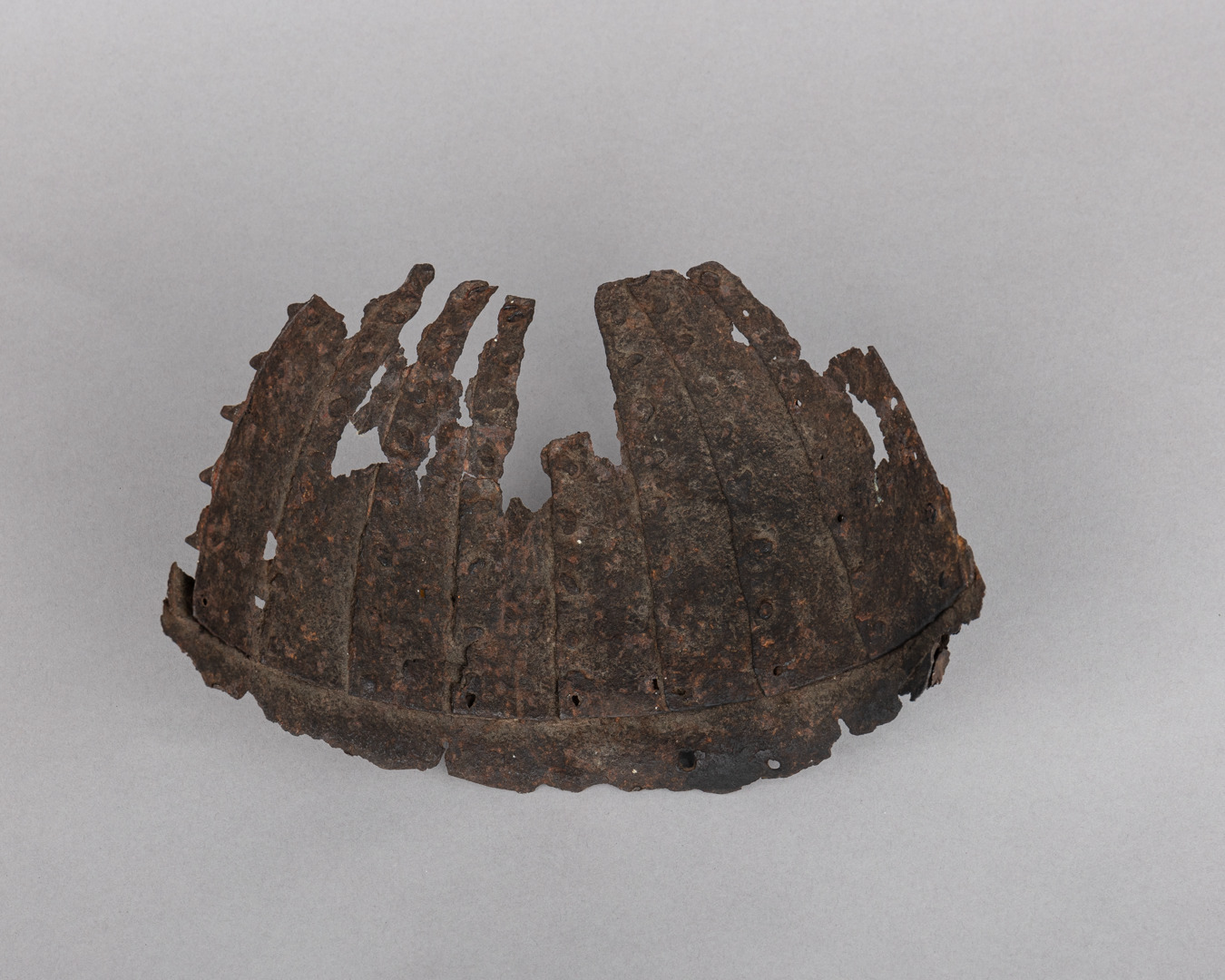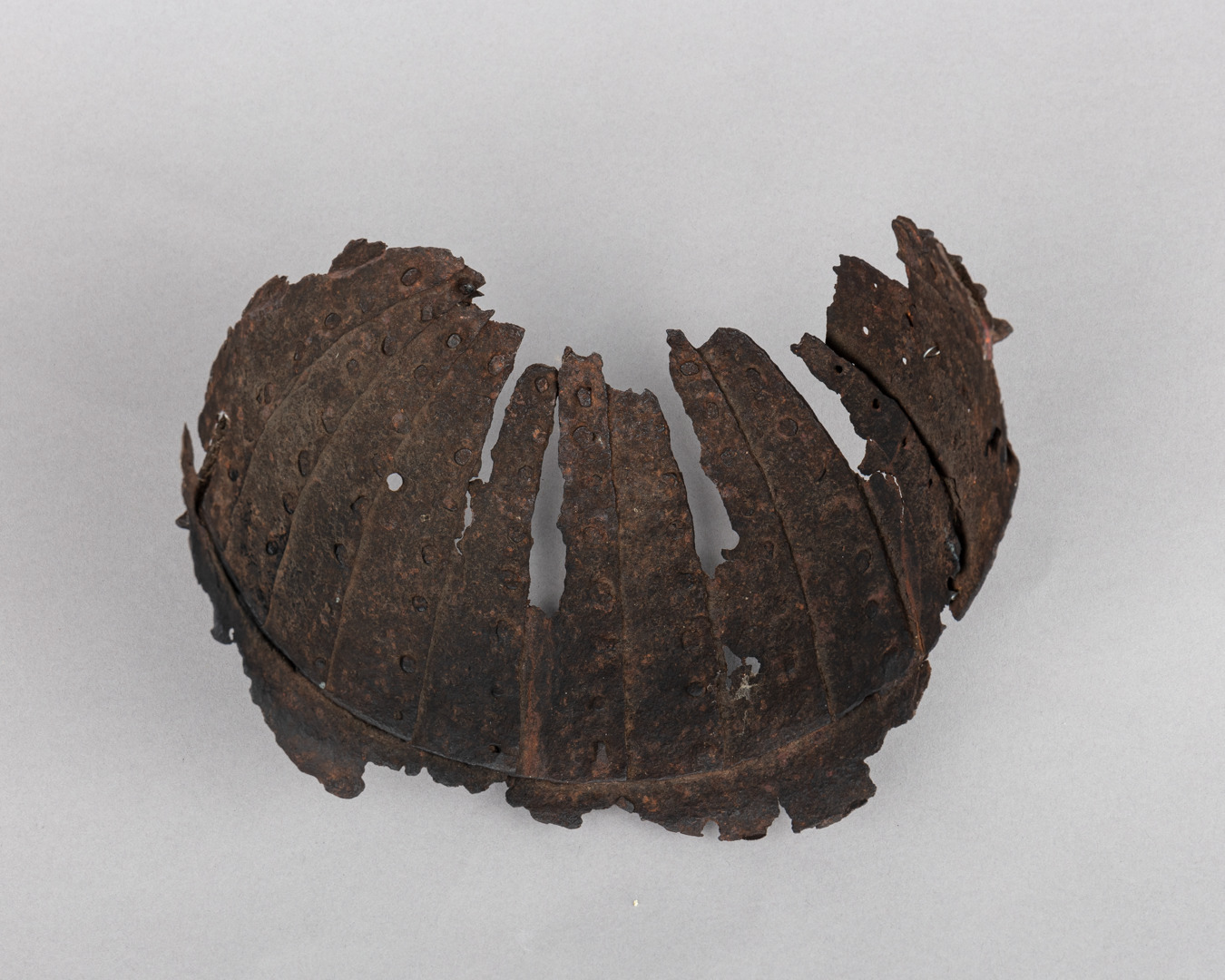Helmet Bowl (Hoshi-Kabutobachi)
The riveted plate style helmet (hoshi-kabuto) emerged around the turn from the 10th to the 11th century (early Heian period) and constitutes the earliest indigenous Japanese helmet form. This helmet, which dates to the 12th–13th century (late Heian to early Kamakura period), would have originally been decorated with a gilt copper plate (nihōjiro) on its front and back, respectively, each featuring three arrow-shaped elements (shinodare). Although in fragmentary condition, the helmet is a rare example, with relatively few of this type existing today.
Due to rights restrictions, this image cannot be enlarged, viewed at full screen, or downloaded.
This artwork is meant to be viewed from right to left. Scroll left to view more.
